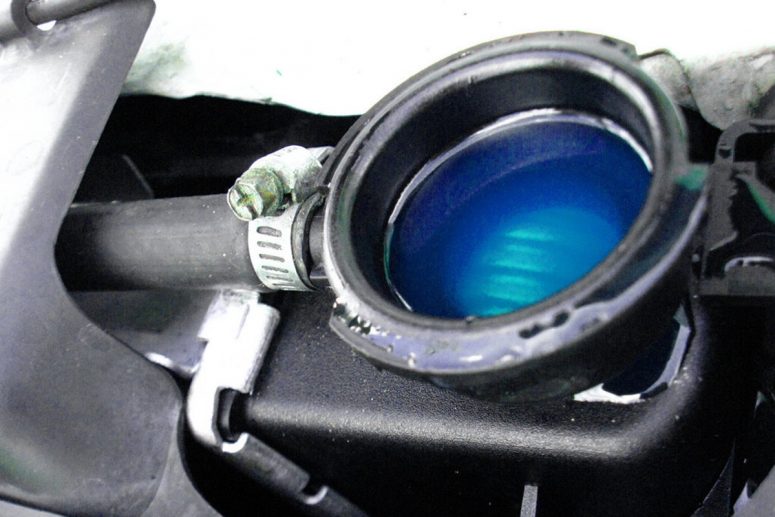Think all types of car engine coolant are the same? You could be setting yourself up for a major headache.
Does antifreeze color matter? Are there different types of antifreeze? Differences in the various types of coolant (or “antifreeze”) run far deeper than just their color…
In fact, many manufacturers today (especially the European car makes) each develop specific types of coolant for use in their engines. There are many reasons for this but it boils (ha!) down to car manufacturers simply wanting a coolant formulation that will perform the best in their engines and be the safest to use on their materials and components. Because of this, it is important to remember that not all coolants are comprised of the same chemicals, work in the same way, or, most importantly, mix well together. Actually, combining certain types of coolant together can and will wreak havoc on your car’s cooling system. Depending on what color coolant you are mixing, different substances in the types of coolant can react chemically with each other in myriad ways from becoming sludge and clogging the small passages in the system and ruining your radiator (not to mention the risk of overheating your engine), to becoming corrosive to the many hoses and lines it runs through and even the metal of the engine block, itself.
When deciding on a coolant for your car, your best bet will be to stick with what’s in the owner’s manual.
To help avoid such catastrophes and aid in preventing the costly mistake of mixing the wrong types of coolant together, different car manufacturers’ coolants have different colors and it’s important to know what type and what color coolant should be put in your car. When deciding on a coolant for your car, your best bet will be to stick with what’s in the owner’s manual. But what if you aren’t the first owner of the car, or can’t be sure that it was serviced correctly? We recommend a thorough flush of the cooling system and replacement with the proper coolant mixture (the stuff doesn’t last forever anyway, regardless of which kind it is).
Here’s a handy reference* of just some European car makes and what color coolant they use.
It is important to note, however, that you can’t go by color alone – some types of coolant that appear to be the same or similar in color are actually quite different, so when in doubt about what color coolant you should use in your car, follow our helpful tip in the last paragraph to be sure you never mix the wrong coolant types together in your car:
Genuine BMW/Rolls-Royce Coolant – Blue
Genuine Bentley/Audi Coolant G13 – Pink (backwards compatible with all VW/Audi Coolant)
Genuine Volvo Coolant – Bluish Green (used to be straight blue, backwards compatible)
Genuine Mercedes-Benz Coolant – Blue (do not mix with early yellow coolant, requires flush)
Genuine Porsche G40-91-EF Coolant – Pink
Genuine Land Rover/Jaguar Coolant – Orange
None of the above are compatible with the common conventional Greenish/Yellowish coolant often found in many domestic and older vehicles.
*This applies only to the current genuine manufacturer coolant formulations and is not comprehensive. Older model requirements or formulations may vary so it is always best to check your owners manual or consult a qualified automotive service professional.
But what do you do if you develop a coolant leak…
…or otherwise find your coolant level to be low, and you need to be able to get it to your auto repair shop without running the risk of overheating?
Unless you’ve found yourself in this situation, it may sound much less common than it actually is. The problem: the “low coolant light” comes on in your car so you want to get to the shop and have the small leak repaired or system topped up, but you don’t want a relatively small service or repair to turn into much bigger problem by mistakenly adding the wrong type of coolant. For this reason, you should always just add water. Not all coolants are compatible with each other, but they are all compatible with water. With the amount of coolant that would still be left in the system, the chances of boiling the water are slim and it should be more than adequate to get you safely to your nearby mechanic (but keep an eye on the temperature gauge!).
So that’s our Tech Tip for today, everybody: when you’re low on coolant (no matter what color coolant), just add PLAIN WATER (distilled water is even better, if convenient), and then make an appointment online or bring your European car in to one of our three DFW European auto repair and service locations, (or for our readers elsewhere, to your local, trusted auto shop) to have it taken care of properly.

